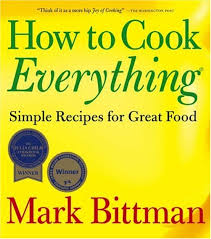Tuesday, April 28, 2009
Movie: Earthlings
Wednesday, April 22, 2009
I'm a little late...
First, a bit of back story. Belinda, Katie Baczewski and I seem to have made a Sunday habit of heading to the Ballard Farmer’s Market to buy foodstuffs for the coming week, run into random people we know (I’ve seen a coworker of mine and his girlfriend there twice now, both times unplanned), watch people and doggies, and have a happy hour beer. This last Sunday was probably the busiest I’ve seen it in my four trips there – it was sunny-ish, there were tulips-a-plenty, all kinds of vegetables out this week that I definitely didn’t see my first time there, and among the many dogs we saw, a golden retriever puppy that I want to cuddle until the end of time.
Katie was more adventurous than me, picking up some arugula and flowering cabbage, but I did follow her lead in purchasing a couple of parsnips. Also, a 2lb bag of fingerling potatoes, and I planned on roasting them with some sweet potatoes and perhaps some beets later that night. I usually make some dish or another for the coming week’s lunches and I definitely had enough for this dish to last me until Friday.
I picked up some beets and sweet potatoes at TOP Foods on my way home, and cut those up in big chunks along with my parsnips, fingerlings, and some asparagus I already had. I tossed them with a garlic-herb marinade and roasted them in the oven for 35 minutes or so. That night, for dinner, they were not bad at all. Good, even. The next day I ate them for lunch at work and they were okay…yesterday, I wasn’t really looking forward to my noon lunch. Today, something had to be done.
I still had enough earlier this evening to last two days more. Remembering that Belinda turned her root vegetables from the market into a scrumptious sounding mash, I threw everything in the food processor.
This was the result.
Notice the color of the mash matching almost exactly the color of my bright red food processor. If I could post the smell online, I would – it’s ALL beets all the time with whatever you want to call this. I thought about how I could save it…it looks kind of like a red hummus…could I eat it on toasts? On pasta? In a pita? Answer to all of the above is no, because I’m not a fan of the taste at all. I called Belinda. “Belinda, I need to tell you about a food disaster.” We brainstormed a little bit, but ultimately I decided the project needed to be scrapped. (At the end of the conversation, Belinda told me when I first called that I was going to tell her really bad news…apparently I sounded panicked.)
Anyway, lessons learned: In my culinarily inexperienced state, unless it’s a tried and true staple that I already know I’ll like, it would be best to stick with a recipe when it comes to these relatively-not-cheap ingredients I’ve taken to buying. Second, for me, beets are good in small doses. Third, I’m glad I have a friend who composts. It’s Earth Day, after all, and I don’t want this food to just end up in the trash. I’m taking this mashed-up catastrophe to my friend JP’s to compost tomorrow, and it’s pasta primavera for the rest of the week.
Thursday, April 16, 2009
Restaurant: Urbane
 So I've been reading Michael Pollen's "The Omnivore's Dilemma" this month, and it has got me really thinking about a lot of issues, eating locally being one of the main ones. Gwen and I found this ad for a restaurant called "Urbane" by the Paramount theater that features locally grown foods. I think I might try and give it a shot. Perhaps you will see a restaurant review soon for this place --->
So I've been reading Michael Pollen's "The Omnivore's Dilemma" this month, and it has got me really thinking about a lot of issues, eating locally being one of the main ones. Gwen and I found this ad for a restaurant called "Urbane" by the Paramount theater that features locally grown foods. I think I might try and give it a shot. Perhaps you will see a restaurant review soon for this place --->Tuesday, April 14, 2009
Recipe: Sourdough Bread



Friday, April 10, 2009
Battle #1 Results: Sourdough Wins!



Wednesday, April 8, 2009
Battle #1: No Knead Bread vs. Sourdough Bread Bake Off!

